Outpost for Unreal Institutions Harnesses Collective Imagination to Explore Public Life
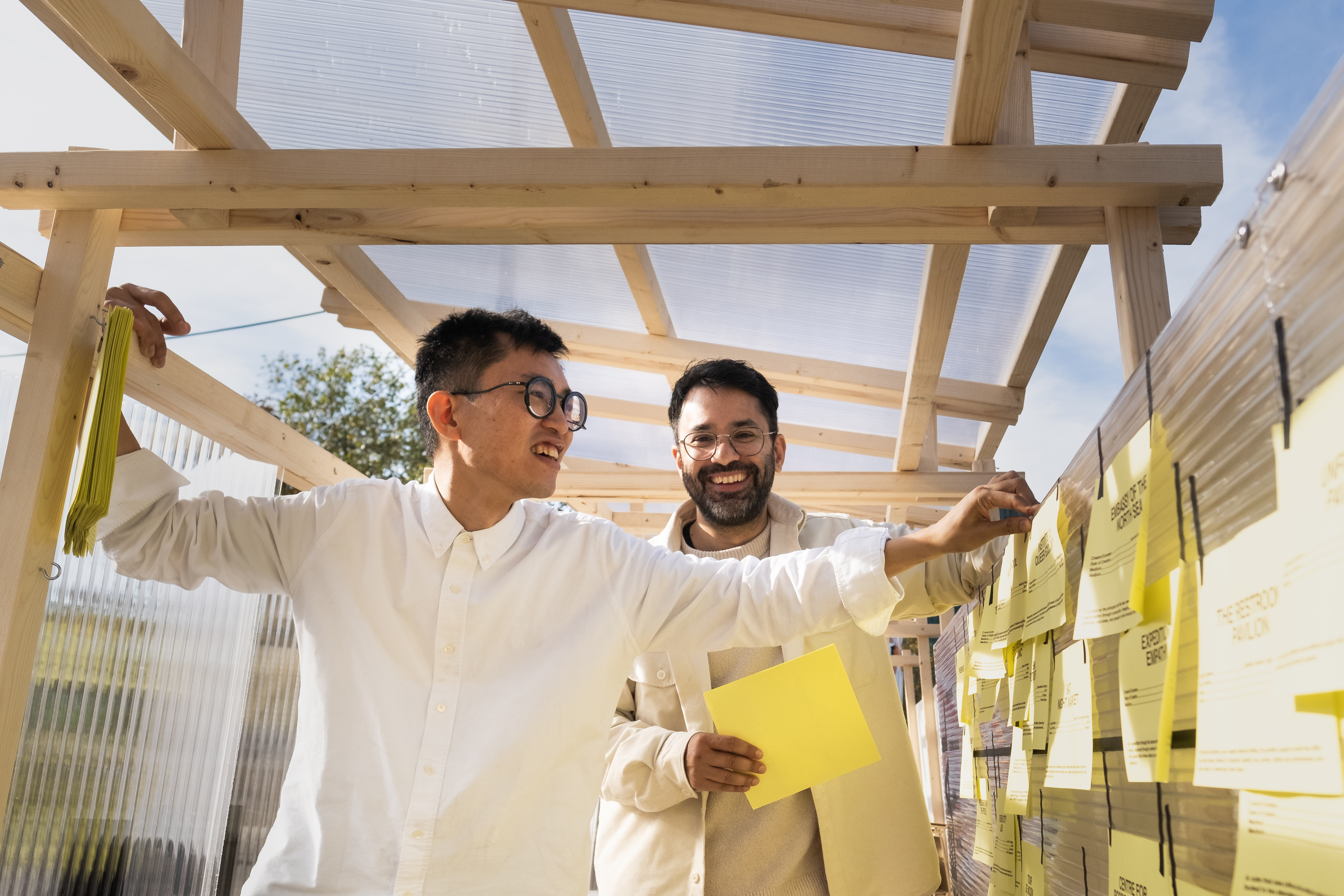
Designers Pete Ho Ching Fung (left) and Samein Shamsher, pictured here in their Outpost for Unreal Institutions at Dutch Design Week in Eindhoven, NL, are “turning to our collective imaginations as a way to shift what’s possible.” (Photo by Tonday Budszus / courtesy Pete Ho Ching Fung and Samein Shamsher)
Posted on
The ongoing project by designers and educators Pete Ho Ching Fung and Samein Shamsher aims to expand its reach following a stellar debut at Dutch Design Week.
A new research project from designers Pete Ho Ching Fung (BDes 2017) and Samein Shamsher (BDes 2017) will appear at Jan van Eyck Academie’s 5th annual Urgency Intensive following a debut as one of Dutch Design Week’s Grand Projects in Public Spaces.
Called the Outpost for Unreal Institutions (OUI), the project comprises a research and public engagement studio aimed at reimagining institutions toward a future characterized by radical change. What government bodies, educational or cultural spaces, rituals, assemblies or social infrastructures might we be missing to ensure a just and equitable transition away from capitalism?
“In a world marked by global and local crises, there is a creeping disillusionment in the ability of modern institutions and their bureaucracies to … produce meaningful change,” Pete and Samein write.
The OUI asks creative practitioners to propose “unreal” institutions that would fill these gaps. The project springboards from a strategy known as “institution-as-method,” wherein artists and designers adopt the guise of institutions — called “pseudo” or “fictional institutions” — to explore public life.
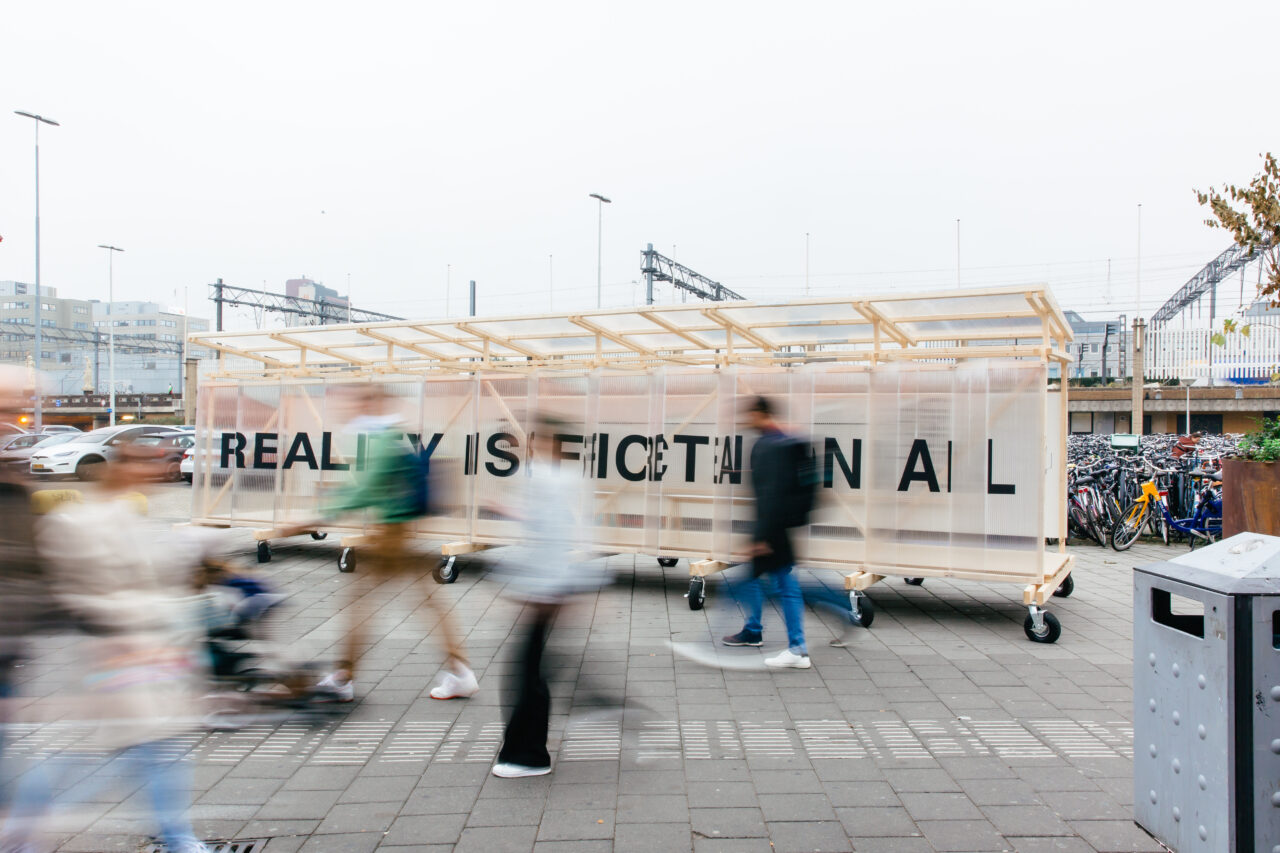
The OUI takes place in a slim, lumber-frame polygon which last fall was set amidst the bustle of Stationsplein, Eindhoven’s city centre entree. (Photo by Anwyn Howarth / courtesy Pete Ho Ching Fung and Samein Shamsher)
More than 100 unreal institutions were proposed at Dutch Design Week, including the Department at the Tip of my Tongue, Municipality of Neurodivergent Society, Ministry of No Power, The Public Academy of Failure, Amusement Park for A.I., Yelling Congress for Whispered Secrets, Weather Station for Useless Data and the Museum of Grieving.
“There were strong affinity groups or thematics that came out of that week,” Samein says. “For instance, a lack of space for people to express or understand emotion in a real and felt way. Feelings related to a data-fied society and a rebellion against the quantification of every element of our lives was another through line.”
Throughout nearly a decade of collaboration, Pete and Samein have regularly employed this way of working. Where OUI differs is its structural open-endedness. Rather than propose a specific fictional institution, OUI was built to uncover how other practitioners work and how their work might be connected.
“We realized there are all these projects across different art and design fields that share this prevalent tactic but never really talk to each other,” Samein says. “We felt there was an unexplored and untapped vein of knowledge. The Outpost represents the start of us engaging with these practitioners to get them talking not only about the output of their work, but their process.”
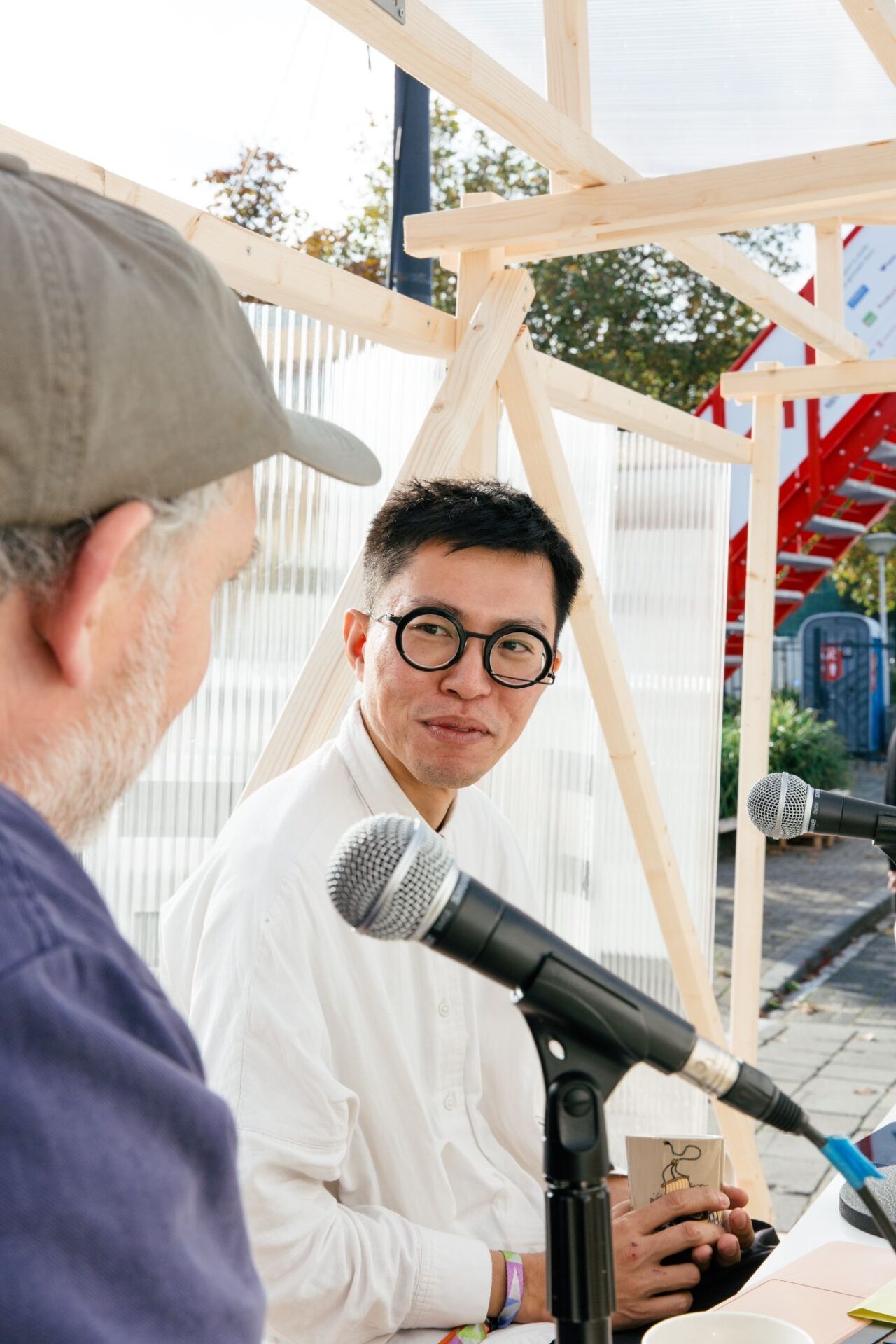
“Our world is formed by how we tell stories,” Pete says. (Photo by Anwyn Howarth / courtesy Pete Ho Ching Fung and Samein Shamsher)
Pete notes this open-mindedness stems partly from studying in the design program at ECU, where he and Samein were encouraged to wander outside of specific disciplines to inform their practices.
“Design and art have very different approaches, but having studied Emily Carr University, we employ tools from both,” he says. “We draw our references from both sides of the field, but we call ourselves designers.”
The OUI takes place in a slim, lumber-frame polygon which was set amidst the bustle of Stationsplein, Eindhoven’s city centre entree last fall. Over nine days, guests and members of the public were invited to step inside, speak with Pete and Sam, and explore — or propose — fictional institutions.
Because its inaugural appearance was part of Dutch Design Week, most of the OUI’s initial contributors were artists or designers already acquainted with institution-as-method. But Pete and Samein are firmly committed to hearing from people regardless of their familiarity with the concept. And OUI is structured to encourage broad participation.
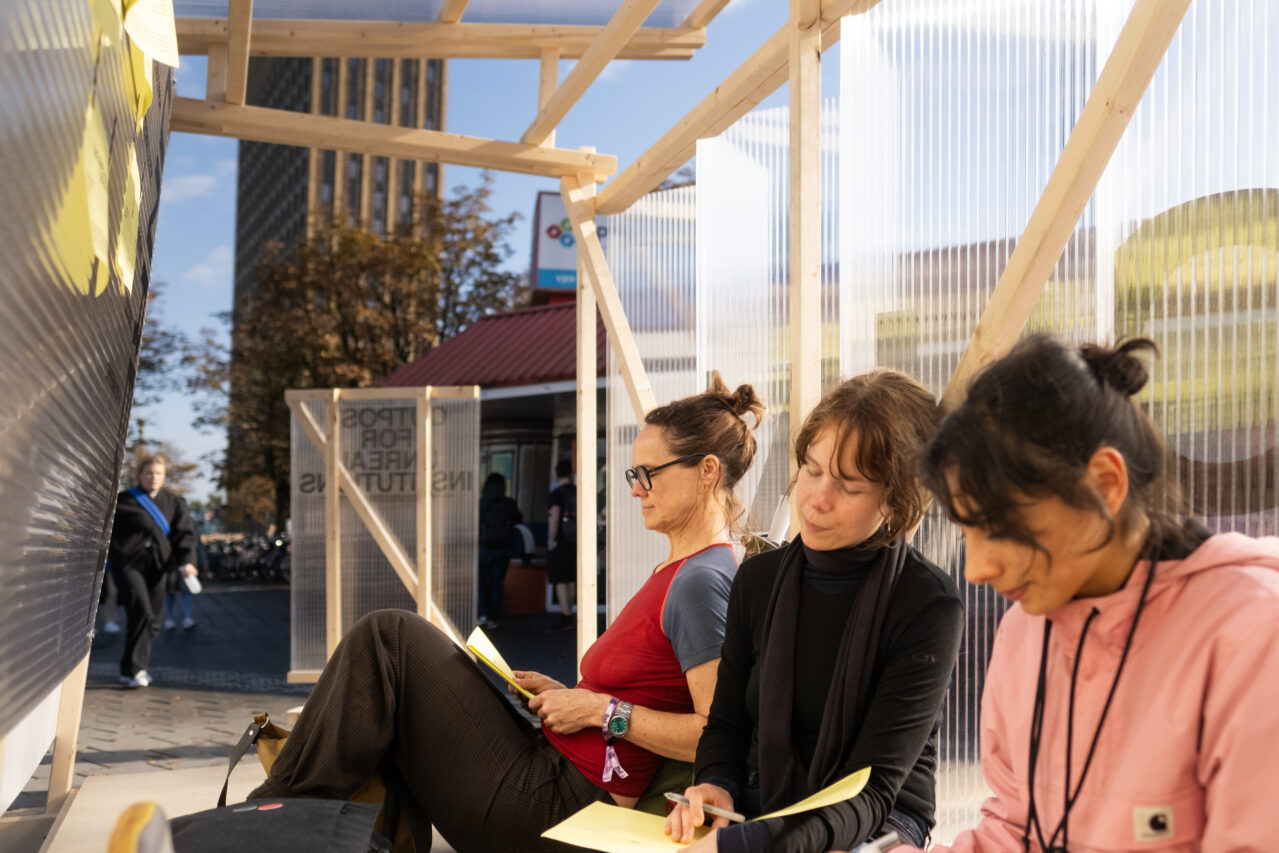
“We very intentionally want to use this space as a means of doing research in public as well as with public,” Samein says. (Photo by Tonda Budszus / courtesy Pete Ho Ching Fung and Samein Shamsher)
They note audiences most often experience art and design projects once they’re already finished. By contrast, the OUI allows participants to get involved at the beginning of a project.
“We very intentionally want to use this space as a means of doing research in public as well as with public — for them to be part of the conversation rather than passive receptors of information,” Samein says. “In turn, that input builds up our own understanding of what these works are, how they function and where the research should go. And the notion that anybody off the street could be part of a research project is really energizing for folks.”
A digital OUI is now in planning stages, with the designers aiming to provide access to the OUI’s growing database of ideas and practitioners through a website. Eventually, the pair hopes to develop a Yellow-Pages-style publication called the Directory of Unreal Institutions.
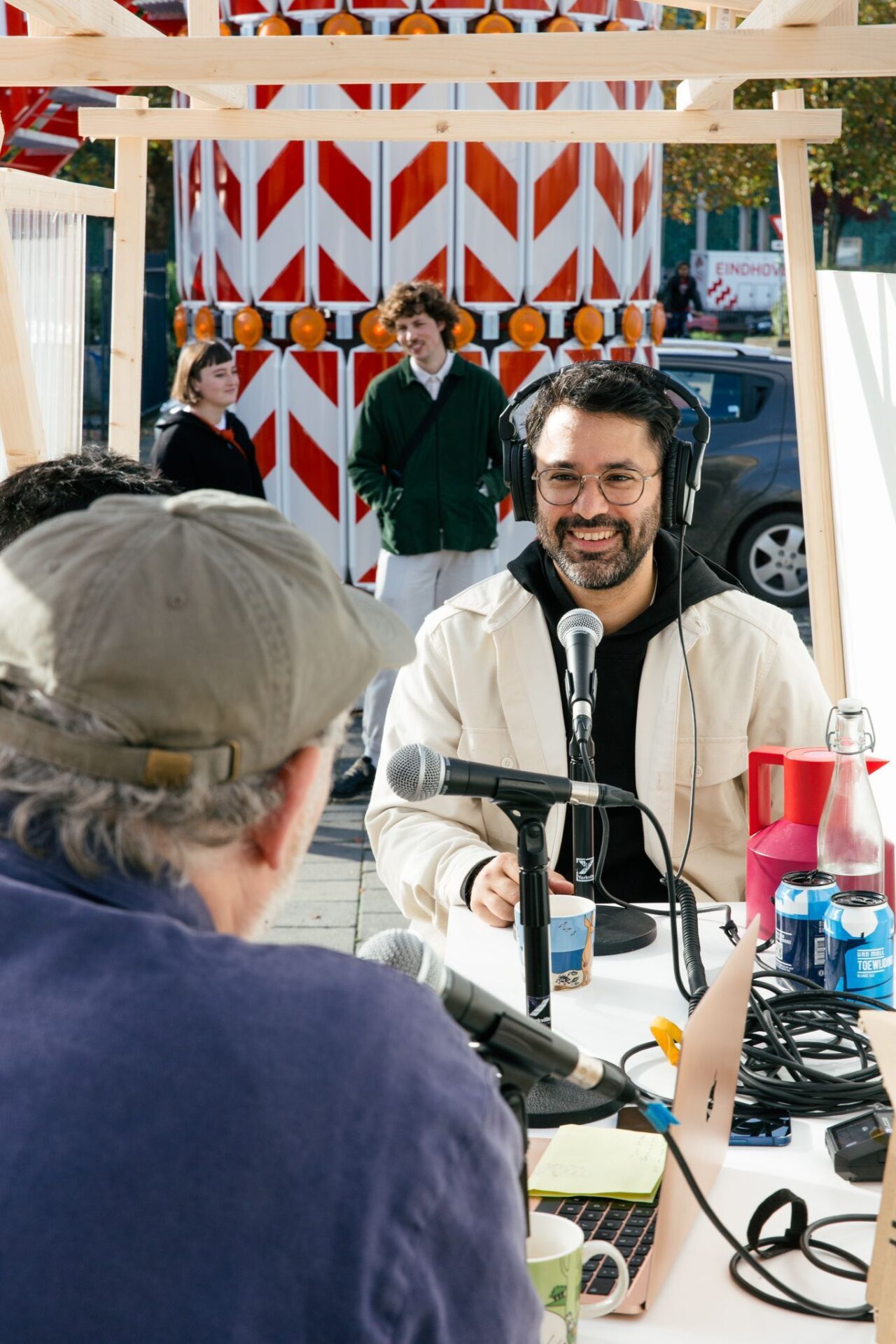
“The notion that anybody off the street could be part of a research project is really energizing for folks,” Samein says. (Photo by Anwyn Howarth / courtesy Pete Ho Ching Fung and Samein Shamsher)
In a reflective moment, Pete points to the fundamental power of storytelling as an anchor for the project and points to a broader cultural shift underwriting the OUI’s development.
“When we talk about the world, it’s through all these hidden narratives. At the same time, that means our world is formed by how we tell stories,” he says. “I feel like the notion of the imaginary is gaining ground. A wider group of people seem to be talking about turning to our collective imaginations as a way to shift what’s possible. And being part of that through this project is exciting.”
The OUI will appear in April at Jan van Eyck Academie’s 5th annual Urgency Intensive in Maastricht, NL, during Maastricht’s Museum Night.
Follow Pete on Instagram to keep up with his practice.
Visit ECU online to learn more about Bachelor of Design and Master of Design programs at Emily Carr University.